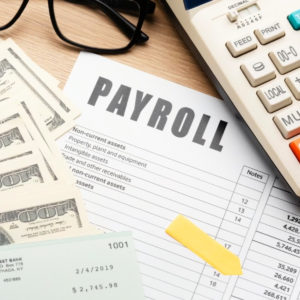
20 Jul Paid in Arrears
What does paid in arrears mean?
The term “paid in arrears” means that payment is made after a service has been provided, rather than in advance. In other words, the money is owed for a period that has passed.
For example, if a landlord rents a property, they could choose to have the rent paid in arrears, meaning that at the end of each month, the tenant pays for that month’s rent. In contrast, if the rent was paid in advance, the tenant would pay at the start of the month for that month’s rent.
Another common place you might see this is with employee wages. Many employees are paid in arrears, meaning they work for a pay period (like two weeks), and then they receive their pay for that period after it’s completed.
One important thing to note about arrears is that it doesn’t necessarily mean late. It’s often just a timing matter regarding when the payment for a service is due in relation to when the service is rendered.
Benefits of paying in arrears?
Paying in arrears has several benefits for both businesses and employees, including:
Accurate Payment Calculations:
Paying in arrears allows businesses to accurately calculate the wages for the hours worked in a given pay period, including any overtime, bonuses, or commissions. It also allows for exact accounting of any deductions, like taxes, insurance premiums, retirement contributions, or garnishments.
Reduced Errors:
Since businesses aren’t estimating the number of hours to be worked, paying in arrears helps reduce the risk of errors in payment. If an employee worked less or more than expected, these changes would be accurately reflected.
Manage Cash Flow:
For businesses, paying in arrears can help manage cash flow. Because the payment is not due until after the service is rendered, businesses can better ensure they have the necessary funds available when it’s time to pay.
Protection for Employees:
Employees are also protected because they know they’re being paid for their actual work performed rather than projected hours. Additionally, if an employee leaves a job, they are still owed their wages for the last pay period they worked, which the employer is legally obliged to provide.
Regulatory Compliance:
Many jurisdictions have laws requiring employers to pay in arrears, which ensures workers are paid for all the time they’ve worked.
Flexibility for Time Off and Adjustments:
If an employee takes time off, or if there are any changes to an employee’s pay rate, paying in arrears provides the flexibility to adjust the paycheck to reflect these factors.
It’s important to note that while there are benefits to paying in arrears, there may also be downsides, such as potential cash flow issues for employees between the time they start a new job and when they receive their first paycheck. However, these can typically be mitigated with appropriate planning and communication.
What are the disadvantages of paying in arrears?
While paying in arrears has several benefits, there are also some potential downsides to consider:
Initial Waiting Period for New Employees:
When someone starts a new job, they might have to wait a while before they receive their first paycheck if they are paid in arrears, depending on when they start in relation to the pay period. This can cause financial strain, especially for hourly workers or others who live paycheck-to-paycheck.
Delayed Payment for Services Rendered:
This can be a disadvantage for employees who have immediate financial obligations. They have to wait until the end of the pay period to get paid for work they have already done.
Potential for Employee Confusion:
If not adequately explained, the concept of being paid in arrears can lead to confusion for employees, particularly those who are used to being paid in advance or immediately upon completion of work.
Administrative Burden:
Paying in arrears may lead to increased administrative work for businesses, as payroll must be calculated based on actual hours worked, overtime, and other factors, which may change from period to period.
Cash Flow Issues for Contractors or Suppliers:
For contractors, suppliers, or businesses paid in arrears by their clients, there can be cash flow difficulties, particularly if payments are delayed or if the period of arrears is lengthy. In some cases, businesses might need to rely on credit or loans to bridge the gap, which can add financial risk.
Risk of Non-Payment:
There’s a risk that the party owing payment could run into financial trouble and fail to pay for services or goods already delivered. Although legal remedies exist for such situations, collecting unpaid sums can be challenging and costly.
It’s crucial for both businesses and individuals to consider these factors and plan appropriately when structuring payment terms.
What are the common payment schedules for arrear payments?
Payment schedules can vary depending on the industry, the company’s policies, or contractual arrangements. However, the most common payment schedules for arrear payments are:
Weekly:
Some companies, especially those with hourly workers like in retail or construction, pay their employees every week. The pay would be for the work performed in the previous week.
Bi-Weekly:
This is one of the most common pay schedules. Employees are paid every two weeks, usually on a specific day of the week, for the work performed in the previous two weeks. This results in 26 paychecks per year.
Semi-Monthly:
Under this schedule, employees are paid twice a month, typically on the 1st and 15th or the 15th and last day of the month. This results in 24 paychecks per year. Unlike bi-weekly, it doesn’t result in extra paychecks because the pay periods are evenly split throughout the year.
Monthly:
Some businesses pay their employees once a month, usually at the end of the month or on the last business day of the month. While this is less common, it is a practice in some professions, especially salaried positions or contracts.
Regardless of the frequency, the payment is typically for the work completed in the period leading up to the payday. The specific time between the end of the pay period and payday can vary based on the company’s payroll processes and local labor laws.




